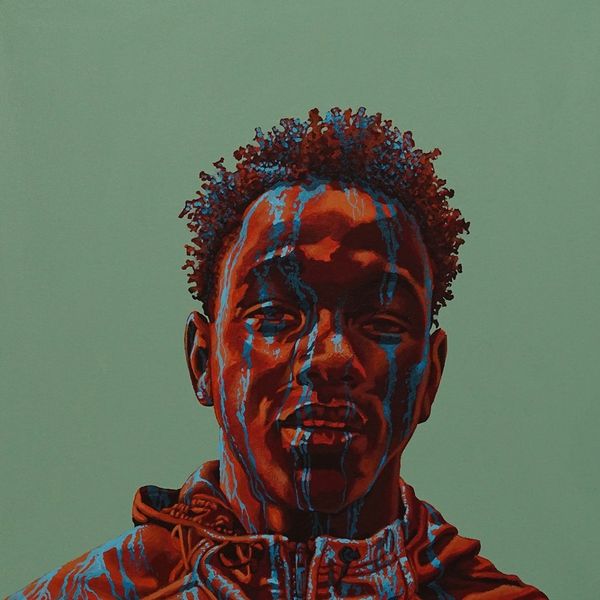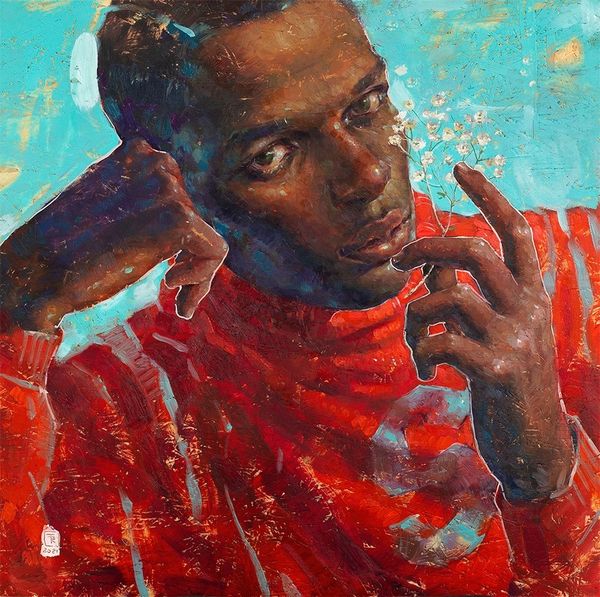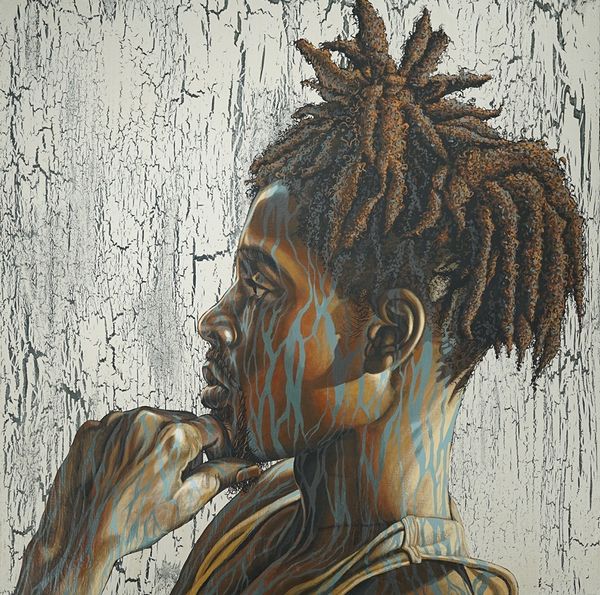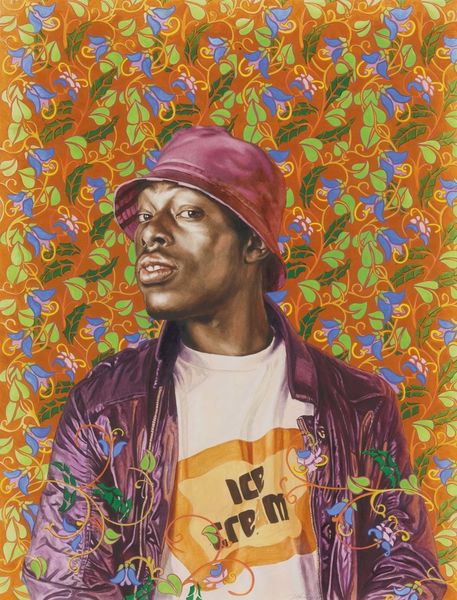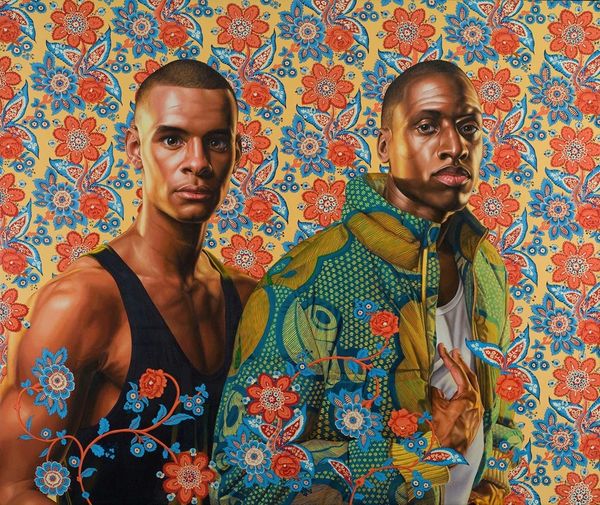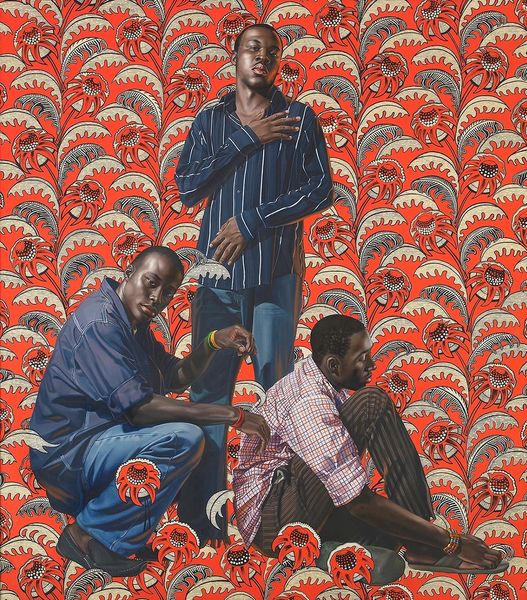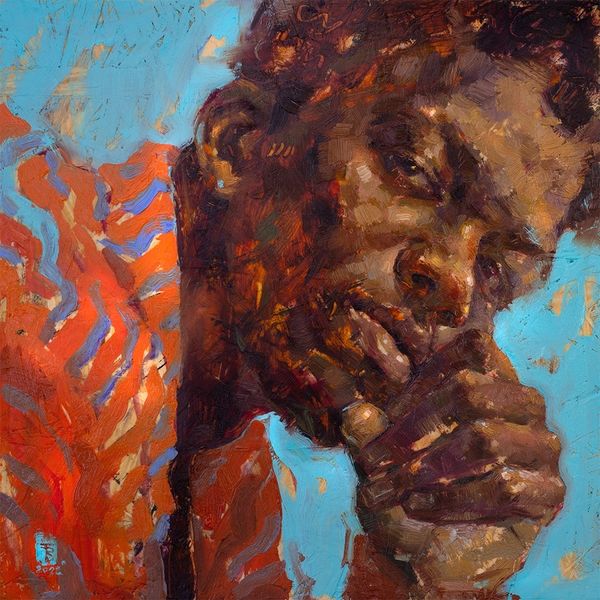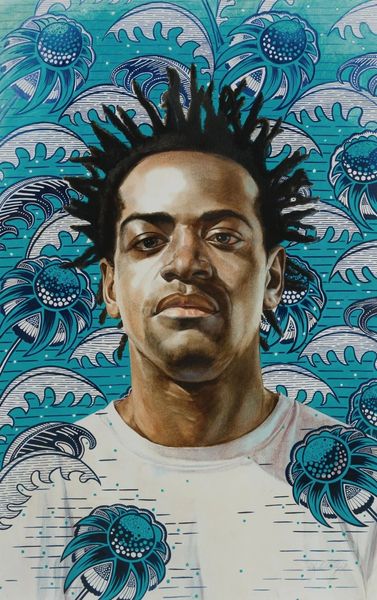
oil-paint
#
portrait
#
pattern-and-decoration
#
figurative
#
contemporary
#
oil-paint
#
figuration
#
oil painting
#
neo expressionist
#
acrylic on canvas
#
neo-expressionism
#
painting art
Copyright: Modern Artists: Artvee
Curator: The painting before us, "Triple Portrait of Charles II" crafted by Kehinde Wiley in 2008, presents a compelling juxtaposition of historical portraiture with contemporary Black identity. It's quite striking, wouldn’t you say? Editor: Absolutely. The mirrored repetition and chromatic harmony created with the subject's silver puffer jacket and light turquoise backdrop create a dynamic field that almost overwhelms the individual. The sheen is almost blinding! Curator: Wiley's work, including this one, is deeply entrenched in questioning representation. Traditionally, portraits of monarchs or powerful figures were symbols of dominance, primarily reserved for white European men. By inserting a young Black man into this visual language, Wiley interrogates power structures. The background too, based on William Morris’s design, speaks to the legacy of British colonialism. Editor: That’s where I struggle, I think, to fully connect to it. Wiley's deployment of those decorative elements certainly creates an intriguing tension. It simultaneously flattens and enhances the surface, disrupting the Renaissance conventions of depth while reinforcing its visual allure. Curator: I think that’s precisely the point; this visual strategy disrupts any singular reading. This fusion is intentional, drawing attention to the lack of Black representation in art history, confronting and reframing canonical norms by making visible those who have been historically unseen. Editor: It seems more ornamental, but also deeply postmodern. Curator: Agreed. These ornamental flourishes are historically gendered, coded feminine and thus subordinate, they can function as a form of visual protest. Editor: I concede. By challenging classical artistic frameworks through contemporary lenses, Wiley’s artwork becomes a powerful expression of social and aesthetic transformation, wouldn’t you say? Curator: Indeed, it fosters a necessary conversation on power, representation, and the ever-evolving dialogues between art history and our current socio-political climate. I find that quite important.
Comments
No comments
Be the first to comment and join the conversation on the ultimate creative platform.
